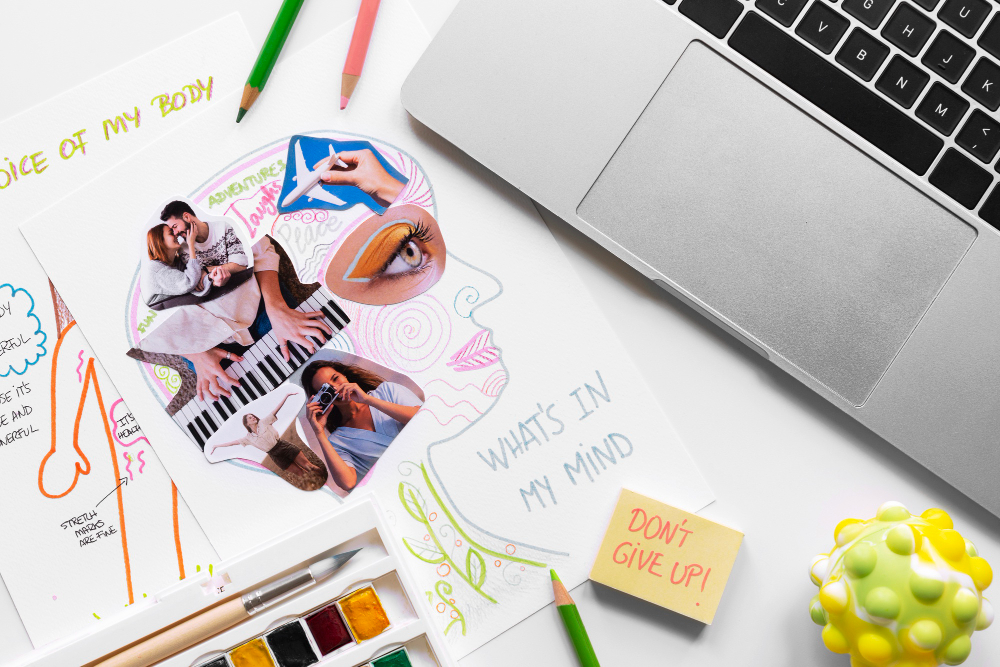Choosing a graphic design university can be one of the most important decisions for anyone looking to break into the creative industry.
It’s not just about learning software or color theory.
It’s about building a portfolio that gets noticed—and gets you hired.
When I first walked into my university’s design lab, I had no clue what kerning meant or why everyone was obsessed with grids.
But I had one thing going for me—curiosity.
And that curiosity drove me to ask questions, take on challenging projects, and eventually build a portfolio that helped me land my first agency internship.
Why Portfolio Matters More Than Ever
Let’s get one thing clear.
Your portfolio is your resume in the world of design.
It’s your first impression.
It’s the conversation before the interview.
Clients, employers, and even art directors aren’t just looking at your GPA—they’re looking at your creative process, your problem-solving ability, and your eye for detail.
A great portfolio tells a story.
It shows how you think, how you work, and what kind of designer you are becoming.
And a good graphic design university helps you tell that story better.
Graphic design university programs often prioritize real-world projects and critique sessions that simulate the professional world.
These critiques, though terrifying at first, taught me how to take feedback and improve.
More importantly, they showed me how to defend my creative choices—a skill that still helps me today in client meetings.
The Value of Real-World Assignments
At my university, one of our final-year projects involved redesigning packaging for a local coffee brand.
It wasn’t just a hypothetical brief.
We met with the client, presented mood boards, and iterated based on their feedback.
That project made it into my portfolio and directly led to a job offer.
Experiences like that don’t just teach design—they build confidence.
You learn how to pitch, how to revise, and how to meet deadlines under pressure.
And that’s exactly what studios and agencies look for in junior designers.
Tools, but More Than Just Tools
Sure, you’ll master tools like Adobe Illustrator, InDesign, and Photoshop.
But a good program goes further.
You’ll dive into motion graphics, UI/UX, typography, branding, and even design thinking.
Each project adds a new layer to your portfolio.
Each class unlocks a new skill.
But most importantly, you start to find your design voice.
By your final semester, your portfolio isn’t just a collection of assignments—it’s a reflection of your evolution.
I still remember the night I reworked my portfolio website before my senior showcase.
My roommate and I stayed up until 3 AM, tweaking animations and fixing spacing issues.
It paid off when a visiting creative director complimented the layout and took my card.
Collaboration Over Competition
In a graphic design university setting, you’re surrounded by people just as passionate—and competitive—as you.
But instead of tearing each other down, the right environment encourages collaboration.
Group critiques, class projects, and shared studios help you see different approaches to the same problem.
I once teamed up with a photographer and a copywriter for a public awareness campaign assignment.
Their perspectives changed the way I approached layout and narrative flow.
That project became the centerpiece of my portfolio.
It proved I could work across disciplines and adapt quickly.
Career Prep Built Into the Curriculum
Another underrated benefit?
Career support.
Design universities often bring in recruiters, organize portfolio reviews, and teach you how to present your work.
We had mock interviews, LinkedIn workshops, and even sessions on pricing freelance work.
I used what I learned in those workshops to land my first freelance branding project—and price it fairly.
That kind of preparation isn’t just useful.
It’s essential.
What Recruiters Actually Look For
When recruiters review portfolios, they’re scanning for:
- Clear layout and structure
- Case studies with context and outcomes
- Strong typographic decisions
- Range of skills (print, digital, motion)
- Personal branding
A graphic design university helps you check all those boxes—while giving you time to experiment and refine.
And let’s be honest, learning how to critique someone else’s work also sharpens your eye.
Over time, you stop designing blindly and start designing intentionally.
You start thinking like a designer, not just acting like one.
Finding Your Design Identity
The portfolio you build in school is only the beginning.
But it’s a powerful launchpad.
It’s where you experiment, take risks, and discover what kind of work makes you come alive.
Some of my classmates leaned into type-driven design.
Others pursued motion graphics and animation.
I found myself gravitating toward branding and identity systems.
That clarity didn’t come overnight—it came from trial, error, and constant iteration.
And the university setting gave me the freedom and structure to explore without fear of failure.
Final Thoughts
No portfolio is ever perfect.
But the right graphic design university gives you the tools, feedback, and experience to get close.
You learn to solve problems visually.
You learn to present your ideas confidently.
And you build a body of work that opens doors.
If you’re serious about a career in design, don’t just look for a school—look for a launchpad.
Your future self (and your portfolio) will thank you.

